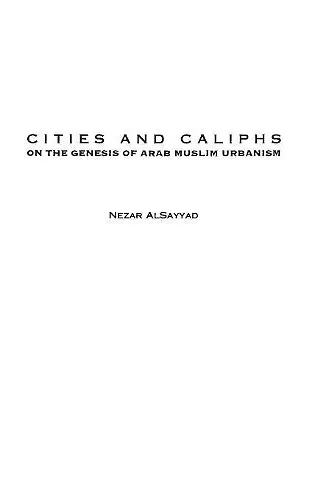Cities and Caliphs
On the Genesis of Arab Muslim Urbanism
Format:Hardback
Publisher:Bloomsbury Publishing PLC
Published:30th May '91
Currently unavailable, and unfortunately no date known when it will be back

AlSayyad examines the extraordinary characteristics of Islamic urbanism and the process by which cities were physically transformed by Islamic culture, religion, and its leaders.
Examines the extraordinary characteristics of Islamic urbanism and the process by which cities and towns were absorbed and physically transformed by Islam.The history of the Islamic world includes many unique cultural, religious, scientific, and architectural developments. Among these was the evolution of the Arab Muslim city, which occurred during the rapid expansion of the Muslim empire in the seventh and eighth centuries A.D. In this probing volume, Nezar AlSayyad examines the extraordinary characteristics of Islamic urbanism and the process by which cities and towns were absorbed and physically transformed by Islam. The early leaders of the Muslim empire--caliphs, amirs, and other rulers--had a lasting effect on what the modern scholar would call their cities' urban form. AlSayyad demonstrates that the stereotypical model of the Muslim city is inadequate, not only because individual rulers in regions of the empire were different, but also due to various cultural influences that were indigenous to conquered areas. After a prologue, the study begins with a historiography of the concept of the Muslim city and how it was paralleled by the development of its physical form. Garrison towns, established as military camps by early Arab conquerors, are examined next by AlSayyad. His research shows that building methods and urban form in the Arab cities were products of Islamization and consolidation of Caliphal power. New capital towns and cities, AlSayyad maintains, were also results of elaborate personal expressions of politico-religious authority by certain Muslim rulers. The book ends by suggesting that the Arabs' and their leaders' changing view of the role of architecture was a major factor behind the fluid urban forms of Muslim cities. This significant contribution to the study of the Arab world and its cultural history will be of great value to Middle East, urban, and architectural historians, anthropologists, and archaeologists, as well as to students of Islamic history and urbanism.
ISBN: 9780313277917
Dimensions: unknown
Weight: 454g
208 pages